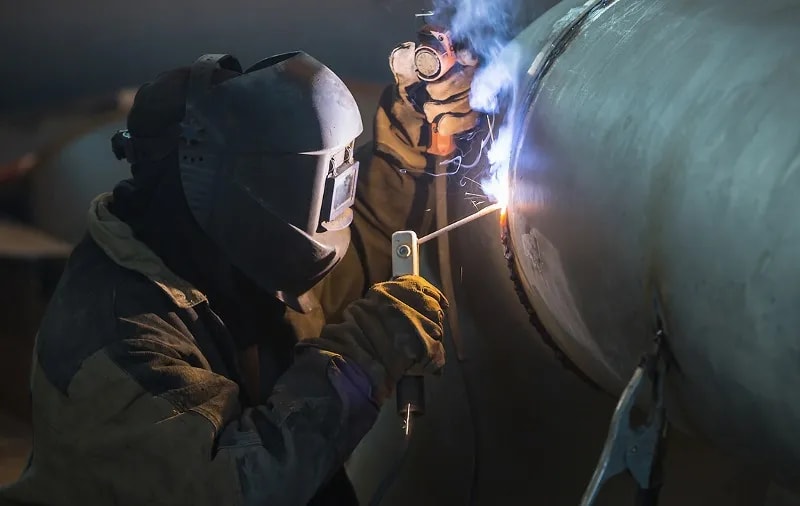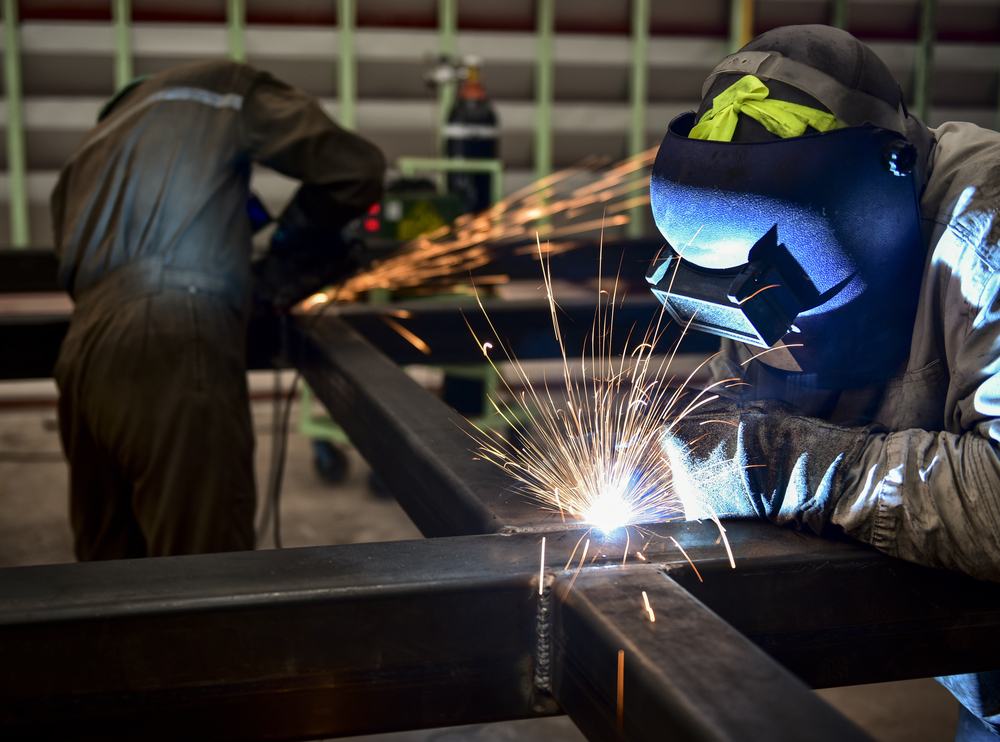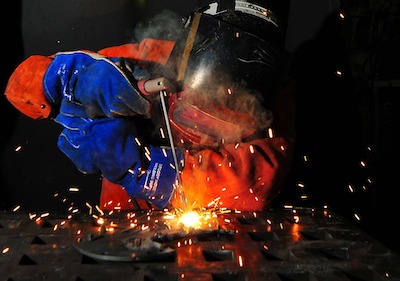Why overheating compromises welds and Montana Mobile Welding and Repair Welding’s approach to fix it
Common Welding Repair Service Issues and Exactly How to Address Them Successfully
Welding repair services commonly experience a variety of concerns that can threaten the stability of the last product. Typical problems consist of poor penetration, porosity, and misalignment, among others. Each defect provides distinct difficulties that need details methods for resolution. Understanding these issues is crucial for welders intending to improve their end results and abilities. This discussion will certainly discover these common welding repair service issues and efficient approaches to address them.
Poor Infiltration
Insufficient infiltration occurs when the weld steel falls short to fully fuse with the base material, causing weak joints and prospective structural failures. This concern usually stems from not enough heat input, incorrect electrode angle, or inappropriate welding rate. Welders might come across poor infiltration due to a miscalculation of the essential specifications for a certain product thickness or type. Additionally, contamination on the base product's surface can prevent efficient bonding, aggravating the issue. To resolve poor infiltration, welders ought to assure suitable settings on their equipment and keep a clean work surface area. Regular examination of welds is suggested to recognize any deficiencies early, enabling prompt adjustments and the avoidance of endangered structural stability in welded settings up.
Porosity
Porosity is a common defect in welded joints that manifests as small gas bubbles trapped within the weld steel. This problem can endanger the honesty of the weld, causing reduced stamina and possible failure under stress. Montana Mobile Welding and Repair Welding. Porosity commonly occurs from contamination, moisture, or inappropriate welding strategies, which permit gases to run away into the molten weld swimming pool. To address porosity, welders must ensure correct surface area prep work, maintain a clean working setting, and utilize appropriate welding criteria. Furthermore, selecting the best filler material and shielding gas can minimize gas entrapment. Normal inspection and testing of welds can help determine porosity early, assuring timely restorative activities are taken, thus protecting the top quality and dependability of the welded structure
Imbalance
Imbalance in welding can arise from numerous variables, including incorrect setup and thermal expansion. Understanding the origin causes is important for effective resolution. A number of modification strategies are offered to straighten elements and guarantee architectural integrity.
Root causes of Misalignment
Welding imbalance often comes from a selection of underlying problems that can compromise structural integrity. One main reason is incorrect fit-up of parts prior to welding, which can bring about voids and unequal surfaces. Variants in thermal expansion during the welding process can additionally lead to distortion, specifically if the products being joined have different coefficients of development. In addition, poor fixturing and securing may stop working to hold parts safely in area, bring about motion during welding. Poorly maintained devices, including welding machines and devices, may introduce incongruities in the weld grain, additional adding to misalignment. Operator error, stemming from insufficient training or experience, can also play a considerable function in developing misaligned welds.

Improvement Techniques Offered
Resolving imbalance properly requires a mix of rehabilitative strategies tailored to the specific concerns available. One usual technique is the use of jigs or fixtures to hold elements in the appropriate placement throughout welding, guaranteeing constant positioning. Additionally, preheating the products can help in reducing distortion and improve fit-up. For significant imbalance, mechanical realignment strategies, such as making use of hydraulic jacks or clamps, can be utilized to fix the setting prior to welding. Post-weld warmth treatment might additionally be essential to relieve stress and anxieties triggered by imbalance. Lastly, mindful assessment and adjustment during the configuration phase can stop imbalance concerns from becoming considerable troubles, promoting a smoother welding process and enhancing total structural integrity.
Distortion
Distortion is a common challenge in welding that can develop from numerous aspects, including irregular heating & cooling. Understanding the reasons for distortion is necessary for carrying out reliable avoidance techniques. Resolving this concern not just boosts architectural honesty however additionally enhances the overall top quality of the weld.
Root causes of Distortion
When based on the intense heat of welding, materials frequently go through adjustments that can cause distortion. This sensation primarily develops from thermal growth and tightening during the welding process. As the weld area warms up, the product increases; upon air conditioning, it gets, which can develop internal tensions. In addition, irregular home heating throughout a workpiece can aggravate these anxieties, leading to bending or flexing. The sort of product also plays a considerable duty; steels with differing thermal conductivity and coefficients of growth may respond in a different way, causing unpredictable distortions. Inadequate joint style and inadequate fixturing can contribute to misalignment throughout welding, boosting the chance of distortion. Recognizing these causes is important for effective welding repair and prevention strategies.
Avoidance Techniques
Effective avoidance techniques for distortion throughout welding concentrate on managing warmth input and guaranteeing correct joint style. Keeping a consistent heat input assists to reduce thermal growth and contraction, which can lead to distortion. Making see this page use of techniques such as preheating the workpiece can additionally lower the temperature gradient, advertising consistent home heating. In addition, choosing suitable joint designs, such as T-joints or lap joints, can boost security and minimize stress focus. Applying proper fixturing to secure the work surfaces in area even more aids in preserving placement throughout the welding procedure. Finally, staggered welding sequences can distribute warmth a lot more uniformly, preventing local distortion. By applying these methods, welders can greatly reduce the possibility of distortion and enhance the general top quality of their welds.
Fracturing
Cracking is an usual issue run into in welding repairs, typically resulting from different aspects such as inappropriate cooling prices, material selection, or inadequate joint prep work. The incident of splits can greatly jeopardize the integrity of the weld, leading to prospective failures throughout procedure. To resolve this issue, welders must initially examine the source, making certain that materials are suitable and appropriately selected for the particular application. Additionally, regulating the air conditioning rate during the welding procedure is necessary; rapid air conditioning can generate tension and cause fracturing. Proper joint layout and preparation also contribute to minimizing the risk. Implementing these approaches can enhance weld top quality and durability, ultimately reducing the probability of cracking in finished weldments.

Insufficient Combination
A significant problem in welding repair work is insufficient combination, which occurs when the weld steel does not effectively bond with the base product or previous weld passes - Belgrade Fabrication. This defect can lead to weak points in the joint, possibly compromising the integrity of the welded framework. Elements adding to incomplete fusion include insufficient warmth input, improper welding strategy, and contamination of the surface areas being signed up with. To resolve this problem effectively, welders must assure correct pre-weld cleaning and surface area preparation, along with adjust their welding specifications to attain appropriate penetration and combination. Routine examination during the welding procedure can additionally assist determine insufficient fusion early, permitting timely rehabilitative steps to boost the overall high quality of the weld
Overheating
While welding fixings can enhance architectural honesty, overheating provides a considerable difficulty that can result in product destruction. Excessive heat during welding can change the mechanical homes of steels, leading to reduced stamina, raised brittleness, and bending. This phenomenon is specifically important in high-stress applications where architectural reliability is critical. Identifying overheating can entail aesthetic inspections for staining or distortion, in addition to monitoring temperature level during the welding procedure. To alleviate the dangers related to overheating, welders must use ideal strategies, such as managing heat input, changing traveling rate, and utilizing ideal filler products. view Additionally, implementing pre- and post-weld warmth treatments can assist bring back product homes and boost the total high quality of the fixing, guaranteeing long-term performance and security.
Regularly Asked Concerns
What Are the Common Indicators of a Welding Issue?

Just How Can I Evaluate My Welds for High quality?
To examine welds for top quality, one can make use of aesthetic evaluations, ultrasonic screening, and radiographic methods. Each method assures structural integrity, recognizes defects, and verifies adherence to defined standards, ultimately improving the reliability of the bonded joints.
What Safety and security Safety Measures Should I Take While Welding?
When welding, one must prioritize safety and security by wearing proper personal protective devices, guaranteeing correct ventilation, protecting combustible products away, maintaining a tidy work area, and being conscious of surroundings to avoid injuries and crashes.
Can I Fix a Weld Without Redoing the Entire Joint?
Fixing a weld without remodeling the whole joint is possible, depending upon the damage (Belgrade Welding). Strategies such as grinding, adding filler product, or using a welding procedure can successfully deal with particular defects while protecting the bordering framework
What Devices Are Necessary for Effective Welding Fixes?
Essential tools for efficient welding repairs include a welding maker, wire brush, grinder, protective gear, clamps, and filler products. Each tool plays an essential role in guaranteeing high quality and security during the browse around this web-site repair service process. Porosity typically occurs from contamination, dampness, or improper welding strategies, which permit gases to get away into the liquified weld pool. Badly conserved equipment, consisting of welding machines and devices, might present variances in the weld bead, additional adding to imbalance. When subjected to the extreme warmth of welding, materials usually undergo adjustments that can lead to distortion. Cracking is an usual concern experienced in welding repair services, often resulting from different aspects such as improper air conditioning rates, product choice, or poor joint preparation. A substantial issue in welding repairs is insufficient combination, which happens when the weld steel does not properly bond with the base material or previous weld passes.